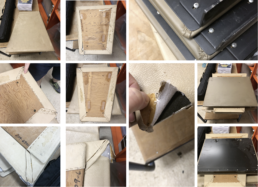Our project
Restoration of CRAY supercomputers
During the next few weeks, the EPFL will make available to us a CRAY X-MP/48, used at CERN a few years ago, as well as a CRAY-1S, the first CRAY supercomputer in Switzerland, to be placed at the heart of our exhibition. They will complement the CRAY-2 and the CRAY T3D. Exhibited for many years in the corridors of the EPFL, the seats of these CRAYs have worn out with time.
These pieces have an important historical value in Switzerland and in the world. They are the ancestors of our microcomputers… Today, we all have a smartphone in our pocket that has a computing power equivalent or even superior to these machines.
But what is the story behind this small screen, behind its memories and processors? What is the link between these two machines? What are the anecdotes linked to these objects? This is what Musée Bolo wants its visitors to discover.
Without dinosaurs, there would be no birds
Just exhibiting machines, without explaining their history, is meaningless. It must be accompanied by testimonies, interviews and some complementary pieces of the collection.
In parallel, we would like to complement this restoration with a new temporary exhibition that highlights the history of the CRAY supercomputer and its genius inventor, Seymour Cray.
Support our Project
Fondation Mémoires Informatiques
1038 Bercher
IBAN: CH4009000000172991457
BIC: POFICHBEXXX
Mention: CRAY
CRAY-1S
The CRAY-1, invented by Seymour Cray, was launched in 1976. It is a supercomputer with a vector architecture, considered to be the fastest computer in the world. It is built around a 64-bit processor running at 80 MHz, with 8 MB of RAM and cooled with freon.
It reached a computing power of 160 MFLOPS (or mega-FLOPS), the average power of a desktop computer twenty years later. One of the innovations of this machine is its arc shape, which reduces the length of the various wires. This supercomputer weighed nearly 5 tons and cost nearly $9 million at the time. The first CRAY-1 was delivered to Los Alamos National Laboratory and a total of 16 machines were produced.
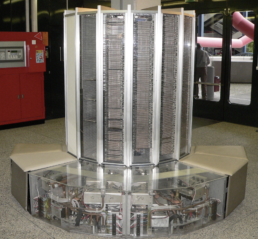
CRAY X-MP/48
The CRAY X-MP, primarily invented by Steve Chen, was launched in 1982.
This supercomputer is almost identical to the CRAY-1 in external appearance, especially in its horseshoe shape, but it has two processors clocked at 105 MHz, each capable of reaching 200 MFLOPS. This model will be improved later to give birth in 1984 to the quadriprocessor CRAY X-MP/48, each CPU being clocked at 117 MHz, for a theoretical unit power of 230 MFLOPS.
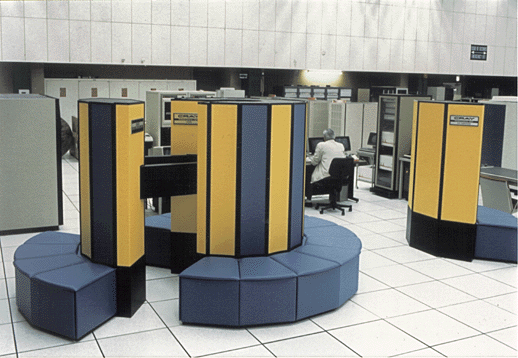

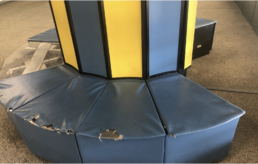
Restoration work
- Ordered the original fabric in the United States from the company Naugahyde
- Replacement of the foam and leatherette for the 4 placets
- Cleaning of the plexiglas
- Cleaning the leatherette of the upper structure (exterior/interior)
- Cleaning of the metal structure
The restorers
Désirée Knüsel
Upholsterer/Decorator
Atelier Formwerkstatt
Noémie Nydegger
Conservator/Restorer
Technical expert
With the participation of Naugahyde, official supplier of CRAY, for the research and selection of fabrics
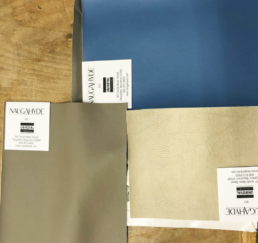
Help us make this beautiful project a reality!
Musée Bolo is a private museum. It does not receive any financial support from the municipality of Lausanne or the canton. The museum owes its survival to generous donors and to the members, all volunteers, who take care of the collection, and who find funding through events and manifestations.
To make this beautiful project a reality, we need funding. By contributing to the restoration and conservation of these CRAY supercomputers, you are helping the museum to showcase these rare pieces and their history.
By participating in this project, you will show that this digital heritage has its place in the cultural heritage of Switzerland. It means teaching visitors that inside their cell phone, there are also stories to tell: research, science, mathematics and above all people… brilliant inventors.
We have more and more requests for guided tours for school classes from all over French-speaking Switzerland and beyond. It is essential that children understand and learn about the history of computing, which is still not very visible in school textbooks. Computers and digital technology are omnipresent. It is impossible to escape it. Some objects or actions: smartphone, desktop computer, online shopping, etc. are so present in our daily activities, that we sometimes tend to forget their importance and their history.
The addition of these CRAY supercomputers in our exhibition is a real plus. These pieces are very important to us. They are incredible machines, because of their history, their size and their unique design.
Your help is precious!
Sponsors who wish to participate in this adventure will benefit from special visibility at Musée Bolo (6,000 visits per year, excluding students). Your name or logo will be printed on a thank-you plaque that will be displayed near the CRAYs (from CHF 3’000.- of donation).
Donations are tax deductible.
Would you like to know more before you decide?
We invite you to visit Musée Bolo and discuss with us your interest in making a donation or sponsorship.

